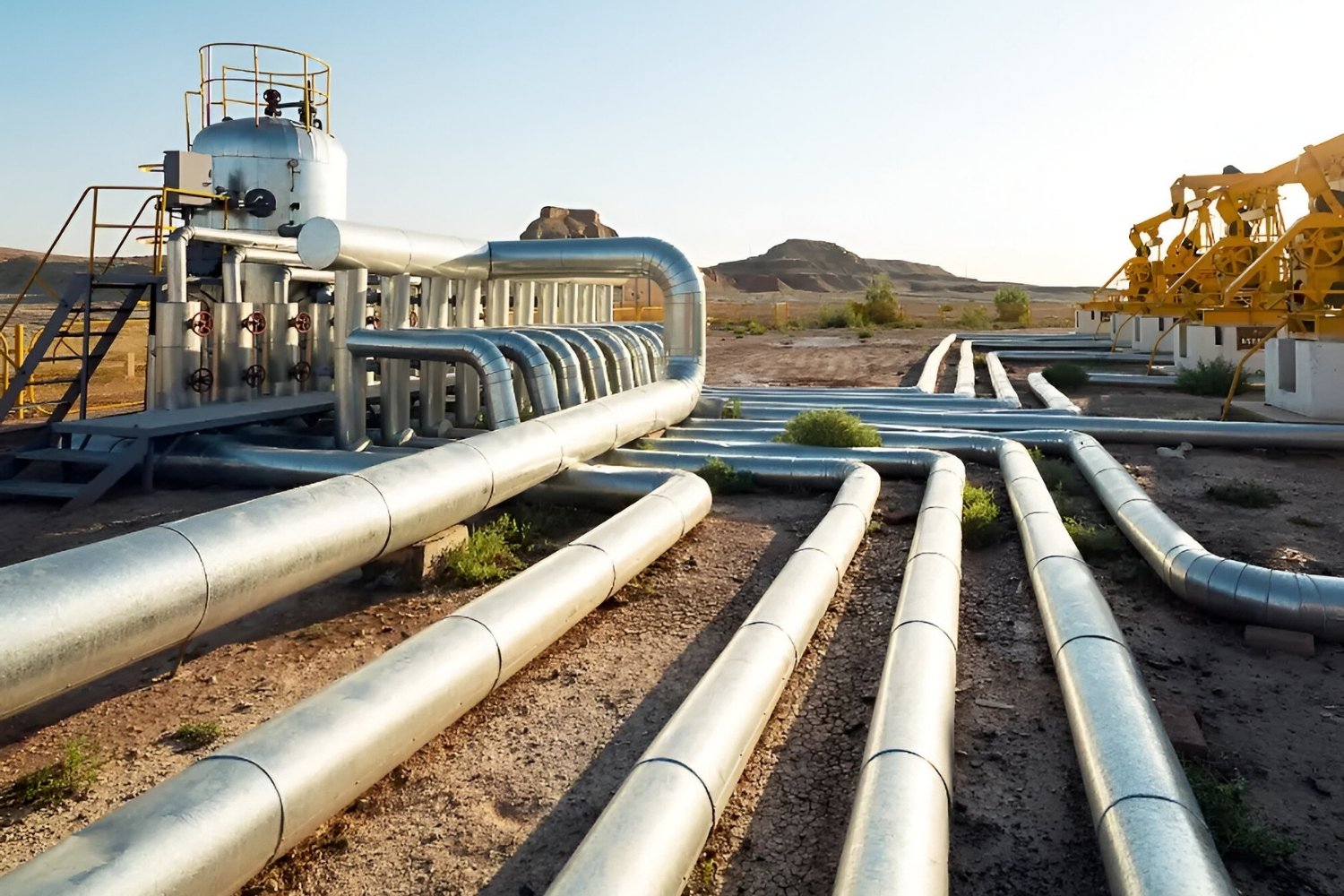
Pipelines are the unsung heroes of modern infrastructure, silently transporting vital resources across vast distances. Ever wondered how oil, gas, and even water make their way to your home? Pipelines are the answer. These engineering marvels stretch across continents, buried underground or laid across the ocean floor. They ensure that energy and water flow seamlessly, powering cities and quenching our thirst. But there's more to pipelines than meets the eye. From their historical origins to the latest technological advancements, these conduits play a crucial role in our daily lives. Ready to learn some intriguing facts about these essential lifelines? Let's dive in!
Pipelines: The Lifelines of Modern Civilization
Pipelines are essential for transporting liquids and gases over long distances. They play a crucial role in our daily lives, often without us even realizing it. Here are some fascinating facts about these underground marvels.
-
The first recorded use of pipelines dates back to ancient China, where bamboo pipes were used to transport natural gas.
-
Modern pipelines can stretch for thousands of miles, connecting remote areas with urban centers.
-
The Trans-Alaska Pipeline System (TAPS) is one of the world's most famous pipelines, spanning 800 miles from Prudhoe Bay to Valdez.
-
Pipelines are not just for oil and gas; they also transport water, sewage, and even beer in some places.
Engineering Marvels
The construction and maintenance of pipelines involve advanced engineering techniques. Let's explore some impressive engineering feats related to pipelines.
-
Pipelines are often buried underground to protect them from weather and reduce the risk of accidents.
-
Some pipelines are built underwater, such as the Nord Stream pipeline, which runs under the Baltic Sea.
-
Engineers use special coatings and cathodic protection to prevent pipeline corrosion.
-
Smart pigs, robotic devices, are used to inspect pipelines from the inside, ensuring they remain in good condition.
Environmental and Safety Considerations
While pipelines are efficient, they also pose environmental and safety challenges. Here are some key points to consider.
-
Pipeline leaks can cause significant environmental damage, contaminating soil and water sources.
-
Companies use advanced monitoring systems to detect leaks quickly and minimize damage.
-
Pipelines are often routed around environmentally sensitive areas to reduce their impact.
-
Emergency response plans are in place to address potential pipeline accidents swiftly.
Economic Impact
Pipelines have a significant economic impact, influencing various industries and economies. Here are some economic facts about pipelines.
-
Pipelines are a cost-effective way to transport large volumes of liquids and gases over long distances.
-
The construction and maintenance of pipelines create thousands of jobs.
-
Pipelines help stabilize energy prices by ensuring a steady supply of oil and gas.
-
Countries with extensive pipeline networks often have a competitive advantage in the global energy market.
Technological Innovations
Technology continues to advance, making pipelines more efficient and safer. Here are some recent innovations in pipeline technology.
-
Fiber optic cables are now used to monitor pipelines in real-time, detecting leaks and other issues instantly.
-
Drones are employed to inspect pipelines from the air, covering large areas quickly and efficiently.
-
Advanced materials, such as composite pipes, are being developed to improve pipeline durability and reduce maintenance costs.
-
Machine learning algorithms analyze data from pipelines to predict potential failures before they occur.
Global Pipeline Networks
Pipelines span the globe, connecting countries and continents. Let's take a look at some of the most extensive and notable pipeline networks worldwide.
-
The United States has the largest network of pipelines, with over 2.6 million miles of pipelines crisscrossing the country.
-
Russia's Druzhba pipeline is one of the longest in the world, transporting oil over 2,500 miles to various European countries.
-
The Trans-Saharan Gas Pipeline, still in development, aims to transport natural gas from Nigeria to Europe, spanning over 2,500 miles.
-
The Baku-Tbilisi-Ceyhan (BTC) pipeline connects the Caspian Sea to the Mediterranean, covering 1,099 miles.
Future of Pipelines
The future of pipelines looks promising, with new projects and technologies on the horizon. Here are some facts about what lies ahead for pipelines.
-
Renewable energy sources, such as hydrogen, may soon be transported through existing natural gas pipelines.
-
Carbon capture and storage (CCS) pipelines are being developed to transport captured carbon dioxide to storage sites, reducing greenhouse gas emissions.
-
Smart pipelines, equipped with sensors and AI, will become more common, improving efficiency and safety.
-
International collaborations are increasing, with countries working together to build and maintain cross-border pipelines.
The Final Word on Pipelines
Pipelines are more than just tubes transporting oil and gas. They’re a crucial part of our daily lives, ensuring energy reaches homes, businesses, and industries. From their vast networks stretching across continents to their role in reducing transportation emissions, pipelines have a significant impact. They’re built with advanced technology to ensure safety and efficiency, often going unnoticed beneath our feet. Understanding these facts helps appreciate the complexity and importance of this infrastructure. Whether it’s the materials used, the environmental considerations, or the sheer scale of operations, pipelines are engineering marvels. Next time you flick on a light switch or heat your home, remember the intricate system making it possible. Pipelines might not be glamorous, but they’re essential. So, keep these facts in mind and share them. You never know who might find this information as fascinating as you do.
Was this page helpful?
Our commitment to delivering trustworthy and engaging content is at the heart of what we do. Each fact on our site is contributed by real users like you, bringing a wealth of diverse insights and information. To ensure the highest standards of accuracy and reliability, our dedicated editors meticulously review each submission. This process guarantees that the facts we share are not only fascinating but also credible. Trust in our commitment to quality and authenticity as you explore and learn with us.
